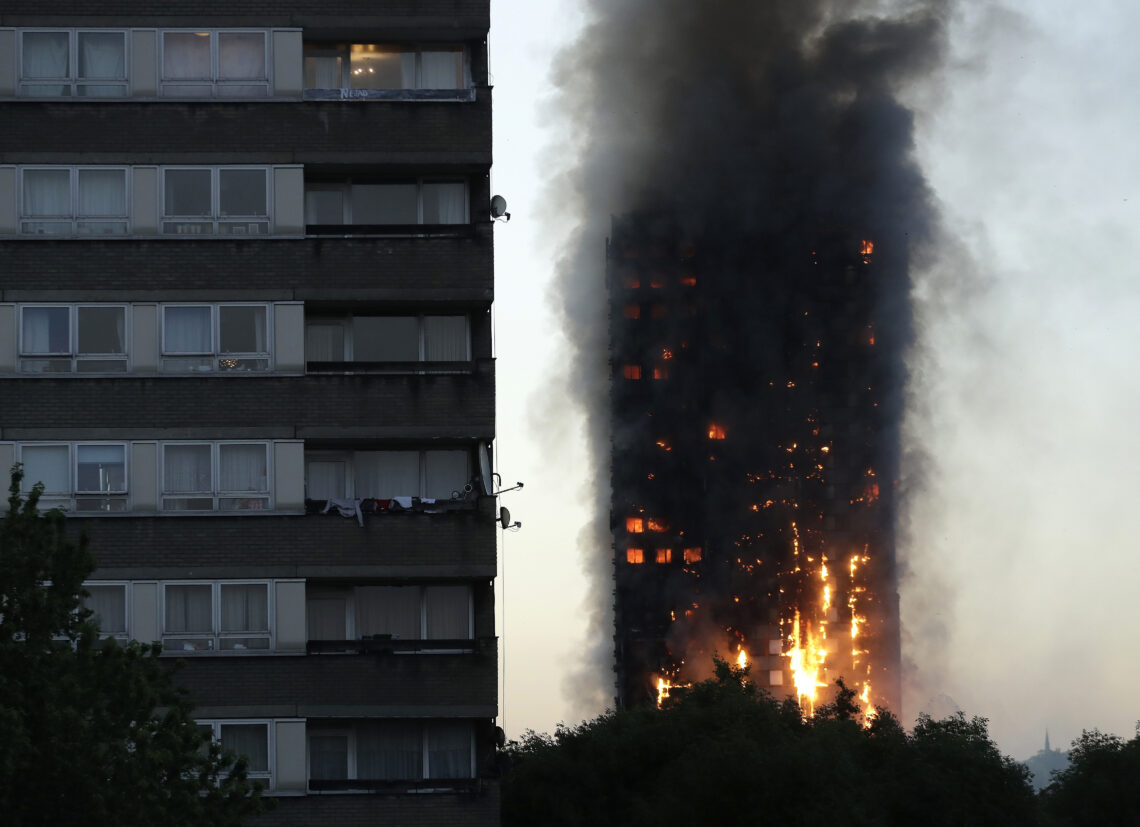72 people died in a fire that started in a kitchen at Grenfell Tower in West London just before 1am on 14 June 2017.
They died because the fire spread through cladding that owners Kensington and Chelsea Tenant Management Organisation (KCTMO) had commissioned and installed on the façade.
This is what the Building Research Establishment to the Grenfell Tower Inquiry concluded in a secret report leaked in 2018.
The original facade of Grenfell Tower, consisting of exposed concrete and, given its age, likely timber- or metal-framed windows, would not have provided a medium for fire spread up the external surface.
This week saw the release of the Phase 2 report into the tragedy, led by Sir Martin Moore-Bick. Again, the cladding of the facade and how basic safety checks were bypassed during construction were given much of the blame.
What the report fails to do is ask the obvious question – why was the cladding installed at all? writes James Heartfield in Spiked.
Climate action
Stephanie Barwise QC, representing the survivors and relatives, said in 2021 that the fire was the “predictable but unintended consequence” of a “laudable desire to reduce carbon emissions”, combined with the construction industry’s greed when it came to cost-cutting.
The cladding was erected on Grenfell Tower in 2012 to reduce carbon emissions as required by the Climate Change Act 2008. In 2010, the then Labour climate change minister, Ed Milliband, published Warm Homes, Greener Homes, which identified social housing as crucial to saving energy and reducing carbon emissions.
Local authorities in London also contributed with increasingly stringent climate requirements.
Hounslow Council committed to reduce CO2 emissions from its activities by 40 per cent by 2017, compared to the 2007/08 baseline.
Grenfell Tower was affected by this trend, and in 2017 the building burned down, killing 72 people. This is the deadliest fire in the UK since the Second World War.
The council’s planning application for the refurbishment of Grenfell Tower also clearly states that the main point of the cladding was sustainability, as it would lead to “a dramatic improvement in heat loss with new insulation and air sealing, resulting in significant energy savings.”
After the work was done, the municipality boasted about how green the homes had become to save the climate. But the cost to those who lived there was horrendous.
According to the report, UK authorities knew about the dangers of the cladding for 26 years without taking any action, writes Sky News. They were made aware of the danger back in 1991 after another serious fire.
Since the Grenfell Tower fire, the construction of similar cladding on other buildings has been halted. But 4,630 buildings 11 metres or taller still have unsafe cladding, and remedial work hasn’t started on half of them, according to a government overview.
There is no doubt that 72 lives were lost, largely because unscrupulous companies and lawmakers took shortcuts to stick cheap and dangerous materials on the sides of large working-class estates.
Although cost-cutting bears a significant part of the responsibility, it was climate hysteria that made the cladding necessary.</p
The Grenfell Tower fire, and the 72 deaths it caused, was a disaster fuelled by climate targets.

